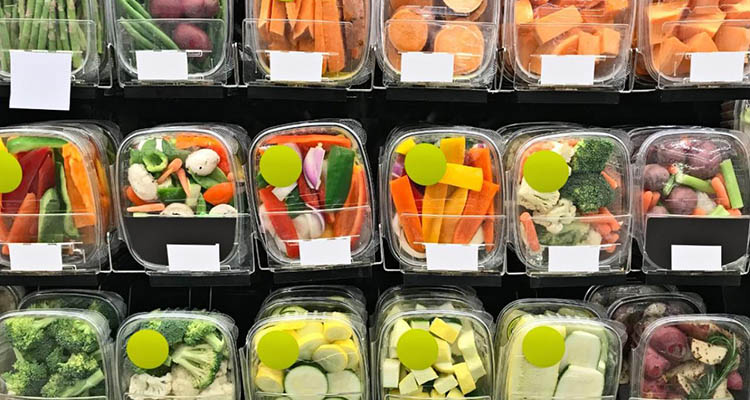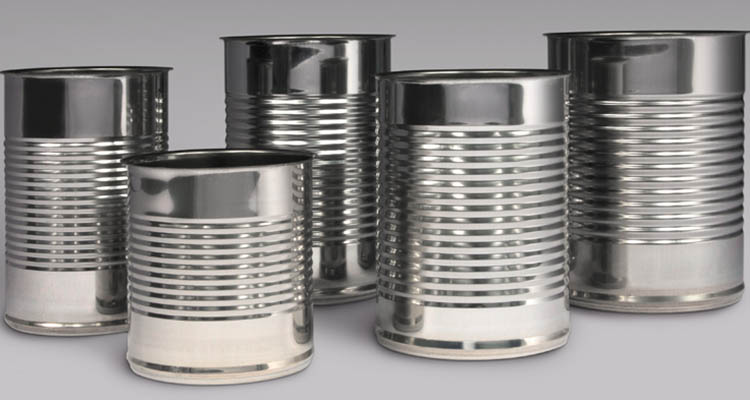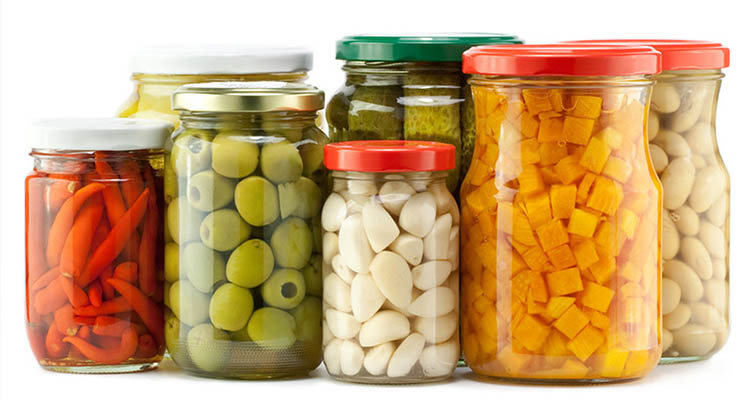Food Packaging
The main objective of food packaging is the protection of food products against external contaminants. These food preservation methods are intended to maintain the level of food quality, minimize possible damage and maximize its duration.
If done effectively, the packaging process will delay the occurrence of any kind of biochemical or microbial reaction. In addition, it will isolate the food from environmental factors that can alter its quality: heat, humidity, light, oxygen, insects, microorganisms, dirt, etc.
In addition, in a complementary way, the same packaging can become a very practical resource to offer information to the consumer about the product itself. Advertising information, logos, photos, as well as nutritional information, ingredients, instructions for use and storage, are displayed on the jars and containers
Types of packaging
Depending on your objective or the kind of food to be packaged, different types are used. The material used will vary depending on the purpose of the container. This is so since the characteristics of some materials will be more appropriate than those of others to fulfill a specific functionality.
Among the most frequently used are those made of plastic, cardboard, metal and aluminum.
Plastic
Due to its versatility, it can take an infinity of different forms and acquire the most diverse designs to adapt to the peculiarities of the product to be packaged. Thus, we can find plastic containers for food use in the form of bottles, bags, cases, trays, jars and all kinds of containers.

Currently, health authorities regulate the type of substances for the manufacture of plastic materials that are intended to contain food. The European Food Safety Authority (EFSA) is in charge of carrying out periodic evaluations that entail the modification of the legislation to be applied. All this, with the fundamental objective of guaranteeing safety for the health of consumers.
One of the health requirements that are required of this type of packaging is that no foreign substance that is toxic or that represents possible health risks is transferred to the food. That is, there can be no transfer of components between the container and the food.
The food industry uses plastic to package all kinds of food products. Throughout the entire process, it is one of the most used materials for the protection, transport and distribution of products. From the origin and raw material, through the manufacturer to the final product that reaches the user.
As a sample we can mention the bags of frozen products, the packaging of products such as cheese, the bottles of all kinds of drinks and oils, the trays of meat or fish, the glasses of yogurt, the cans of pre-cooked food and a long etc.
Paperboard
It is a light and resistant material that is made from wood pulp. It is a resource that can be 100% recyclable. It is widely used for food storage, presentation and shipping. A multitude of different formats are used, which are adapted to the specific needs of the product they contain.
Some examples of the uses of cardboard: take away food cases, boxes for fruits and vegetables, oven trays, corrugated cardboard packaging, containers for liquids, tubs of nuts, tubes for salt and other condiments, food boxes frozen food, packaging for transport and food distribution, etc.
Metal
This material is used for canned food. Thanks to the hermetic closure, the metallic containers are suitable to protect the product and prevent it from coming into contact with light, oxygen or other contaminants. In this way, the risks that the appearance of microorganisms in the container may cause are avoided.

At present, cans are increasingly using a lower thickness of tinplate so that, by guaranteeing resistance to shocks and impacts, they can optimize the use of materials while maintaining the protection of the contents.
Samples of this packaging would be cans and preserves of vegetables, fruits, fish, patés and so on.
Aluminum
It is a common material, inexpensive and easy to manufacture. In addition, it is obtained from recycled elements and can be recycled after use. This type of packaging can store food products safely and for a long time.
It is used to line the inside of bags and as a closure for plastic trays. It comes in a wide variety of shapes and sizes (trays, single-use containers, etc.) to store pre-cooked meals, ready-to-eat foods and other products.
Glass
Glass containers do not rust and are impervious to gases. They do not need additives for the preservation of food and it does not produce migrations towards the product (as occurs with plastic). It can also be reused, as it resists high temperatures. It can be washed and sterilized to extend the useful life of the container. Another advantage of this material is that it is 100% recyclable.

For its part, the main disadvantage currently is its price. Since it is a more expensive material to produce and distribute. What makes it being displaced in packaging by materials such as plastic. Even so, we find products such as beer, jams and pickles that continue to be marketed in jars, jars and glass bottles.
Wood
Wooden barrels are used to pack liquids such as wine, beer, spirits, and oil. In these cases, the flavor of the wood is considered to improve the quality of the final product.
Wooden boxes are also widely used for the packaging of fruits and vegetables or in the presentation of gourmet products.
Paper
It is another of the packaging materials used in food. Some examples of its use can be sugar packets, flour sacks and paper bags.
Packaging systems
There are different packaging systems that can be used in food preparation and handling processes. The three essentials are described below.
Over-wrap or Simple wrap
It consists of wrapping the food with a manageable and inexpensive plastic material. Usually a low density polyethylene (extensible and self-adhesive). Conservation with this system is limited, since although it prevents drying out, it does not prevent access to the atmosphere. Therefore, microbial growth will depend on the temperature at which they are stored.
Vacuum packed
It is carried out using machines and expensive plastic materials capable of reaching a high degree of vacuum inside the container. It is a packaging that extends the shelf life of fresh food as it prevents drying out and eliminates its contact with oxygen. However, it is not an appropriate system for some foods that in the absence of oxygen will lose some of their properties (for example, color). As is the case with fresh meat.
Modified atmosphere packaging
In this system, after creating a vacuum, the atmosphere that surrounds the food in the container is replaced by an optimal gas mixture for preserving the product. Inhibiting gases for the growth of microorganisms, inert gases are introduced to avoid the adherence of slices, or oxygen for those foods that need it. It is the system most used today for packaging fresh food.
